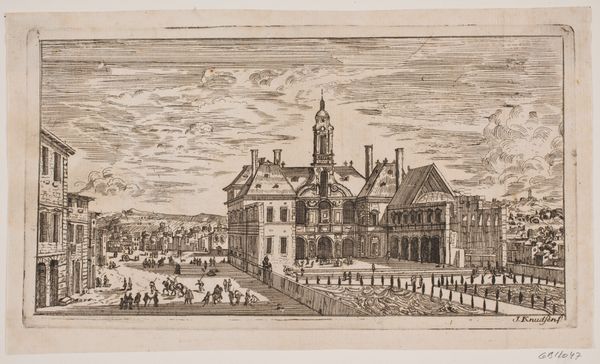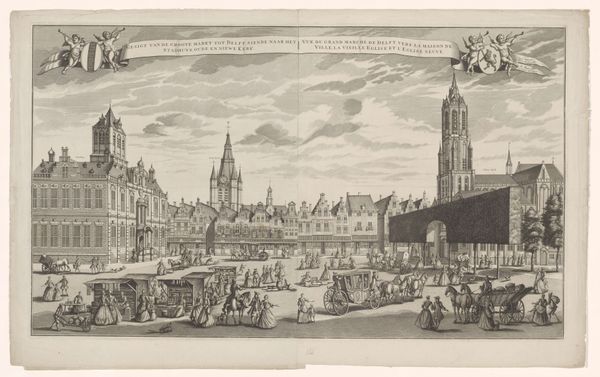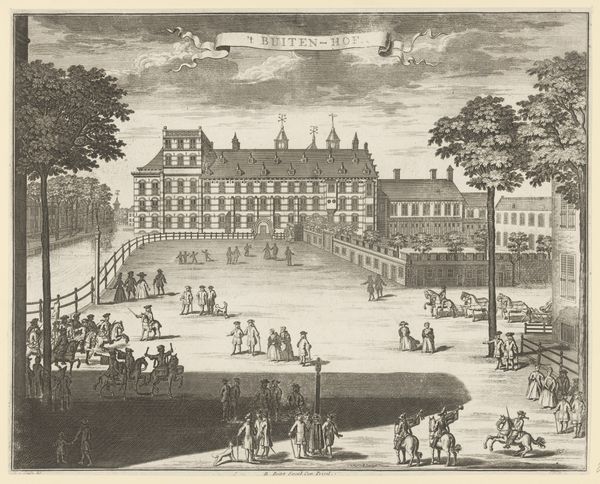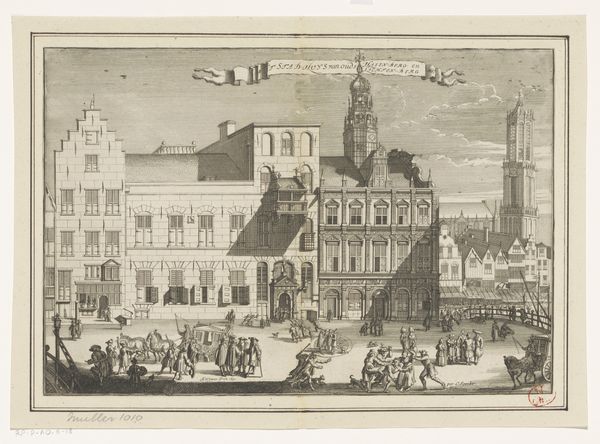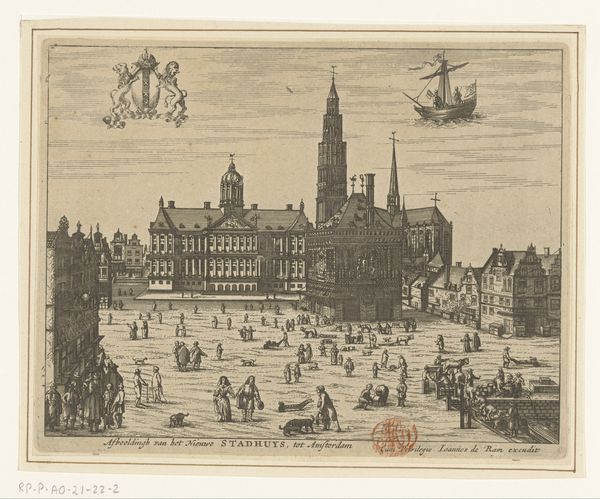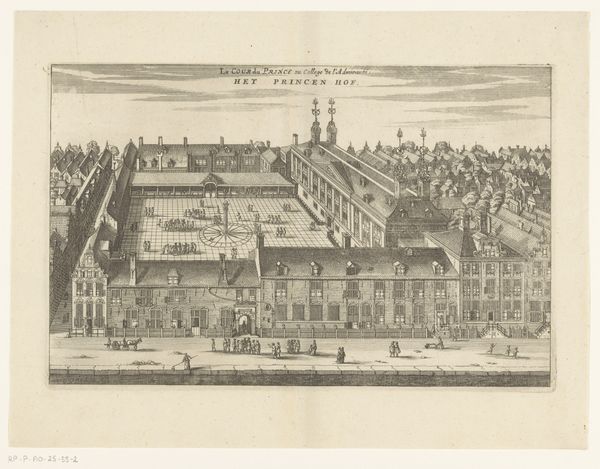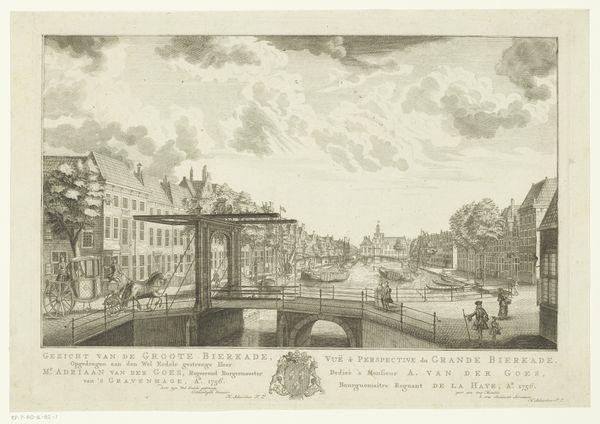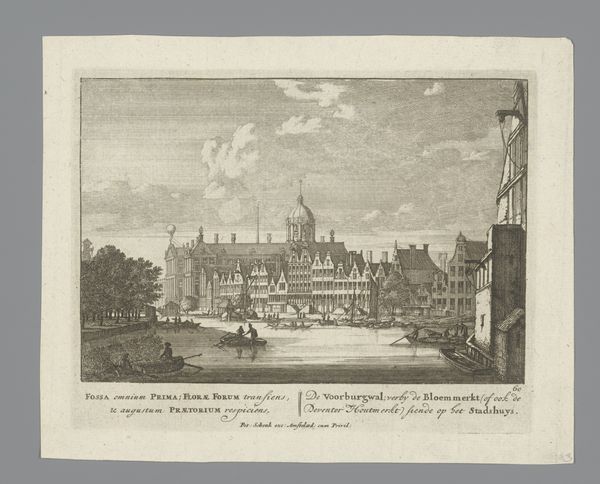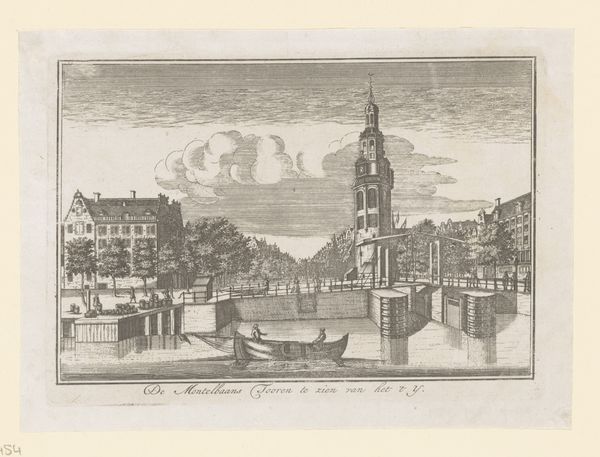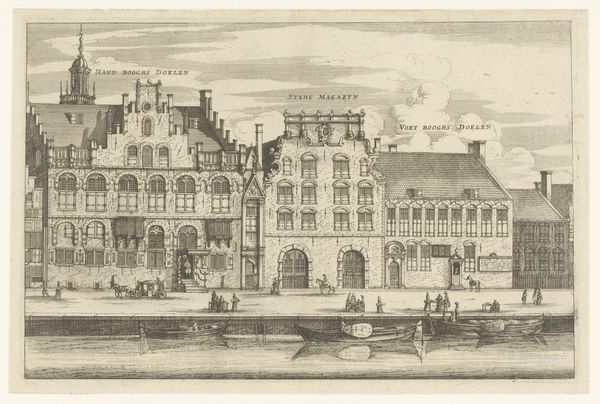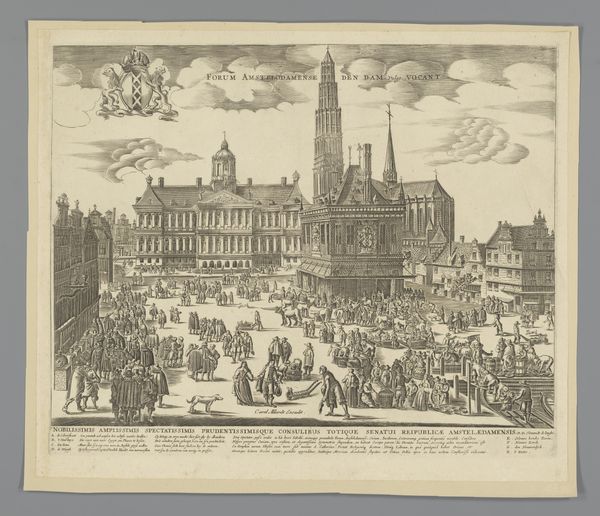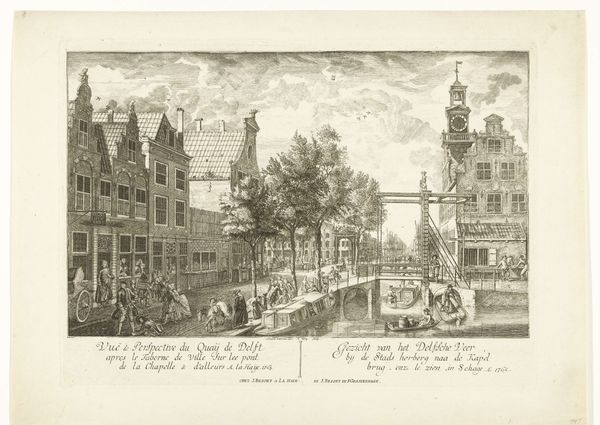
print, engraving
#
baroque
# print
#
old engraving style
#
landscape
#
cityscape
#
engraving
Dimensions: height 584 mm, width 920 mm
Copyright: Rijks Museum: Open Domain
Editor: Here we have Hendrik de Leth’s "Gezicht op het stadhuis te Amsterdam van de achterzijde," created between 1725 and 1731. It’s an engraving, and what strikes me is how much human activity is packed into the cityscape. What do you see in this print? Curator: It is remarkable how De Leth documents the urbanization and material transformation of Amsterdam. Notice how the physical structure of the city—the buildings, canals, and bridges – create opportunities for commerce and shape social interactions. Look at the precise lines achieved with engraving; this facilitated mass production, making images like these accessible and contributing to a shared understanding of urban identity. Editor: So the medium itself, engraving, helped democratize the image of Amsterdam. That makes sense. Curator: Exactly! Furthermore, the print depicts labor directly – people loading boats, strolling along the canals, riding carriages. The artist seems interested in recording these transactions. Editor: Right, the act of seeing, documented via an accessible medium is actually a look at the social fabric. Curator: How does it strike you that the engraving highlights both commerce and leisure? It shows people both at work and enjoying their time off, illustrating the developing mercantile system of the time. Editor: It is kind of stunning, like two sides of the same coin made accessible and distributed in a period of material shifts. This changes my perception a lot; what looked like an unremarkable scene now has socio-economic depth. Thank you! Curator: Indeed, the materiality of art offers insights into the dynamics of its era. Always consider how labor and process shaped both its creation and its message.
Comments
No comments
Be the first to comment and join the conversation on the ultimate creative platform.
